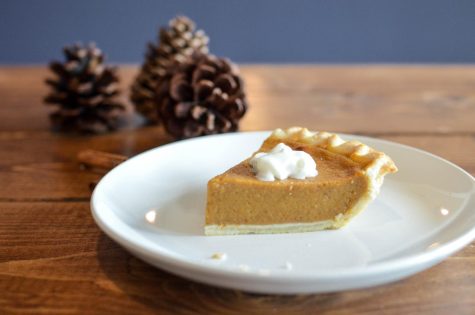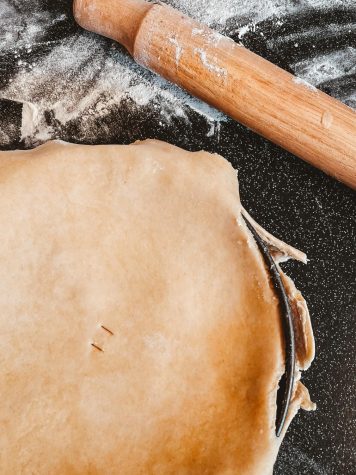The History of the Pumpkin Pie
The baking of pumpkin treats increases as the month of November goes on, Pumpkin pie being the most common. What is the history of this delicious pie and how is it made?
Changing of leaves. Chilled air. Aroma of Pumpkin desserts. Smiles. Thanksgiving is coming up! The day in the year where a large feast of food is made, and people spend the day with their loved ones to share thanks. The strong smell of savory foods fills the home. The food ranges from the traditional turkey to the sweet pumpkin dessert of Pumpkin Pie. Pumpkin pie has been a commonly made dessert but when did this dessert became a traditional Thanksgiving dessert? How is it made?

Pumpkin pie is a pie with a pudding like pumpkin filling with a flaky buttery crust. The filling is spiced with a variety of flavorful spices. The ingredients needed to create it include eggs, pumpkin puree, sweetened condensed milk, spices like cinnamon, ginger, cloves, and nutmeg, and last but not least salt. It was not always like how we know the pie to be today. The pie was made with layers of sliced (or fried) and was combined with sugar, spices, and apple slices in between two crusts.
Pumpkin has been one of the oldest domesticated plants with a domestication of over 7,500 years. The Columbian Exchange brought the pumpkins from the Americas over to England. When the Pilgrims sailed for America in 1620, pumpkins were a popular plant on the table during the “thanksgiving” feast. Pumpkin in that time was not used the same way we would today. A common way they would eat these pumpkins is preparing them in vinegar and water before adding to stew them. They stewed them like they would to apples.

By the early 18th century, Pumpkin pie finally earned a spot at the table. At the same time, the pie was negatively associated with Native Americans. It was a disliked pie, but many people still made the pie. An example of this is Amelia Simmons “American Cookery” Cookbook. She made a recipe of the pumpkin pie, and her recipe is the closest to the traditional dessert we know. It was made with a pumpkin pudding filling. The only crazy difference is that hers calls for a top crust covering the top of the pie. In 1929, Libby’s meat-canning company, in Chicago, introduced the concept of canned pumpkin. It made it easier to make the filling of the pie.
Time passes and by the mid 19th century pumpkin pie rose to political significance. You may be asking “How? It’s a dessert.” Pumpkin pies grew in significance because of the debate over slavery. Many abolitionists from New England would write about the pie in novels. The famous abolitionist, Sarah Joseph Hale, featured the pumpkin pie in her anti-slavery book named Northwood published in 1827. By 1863, Abraham Lincoln established Thanksgiving as a national holiday and the pumpkin pie tradition was part of America’s National History.
Pumpkin Pie has gone through a very interesting history throughout the years. Ever since Thanksgiving has been established as a national holiday, pumpkin pie has been of the most loved desserts. It will continue to be a beloved Thanksgiving tradition.


